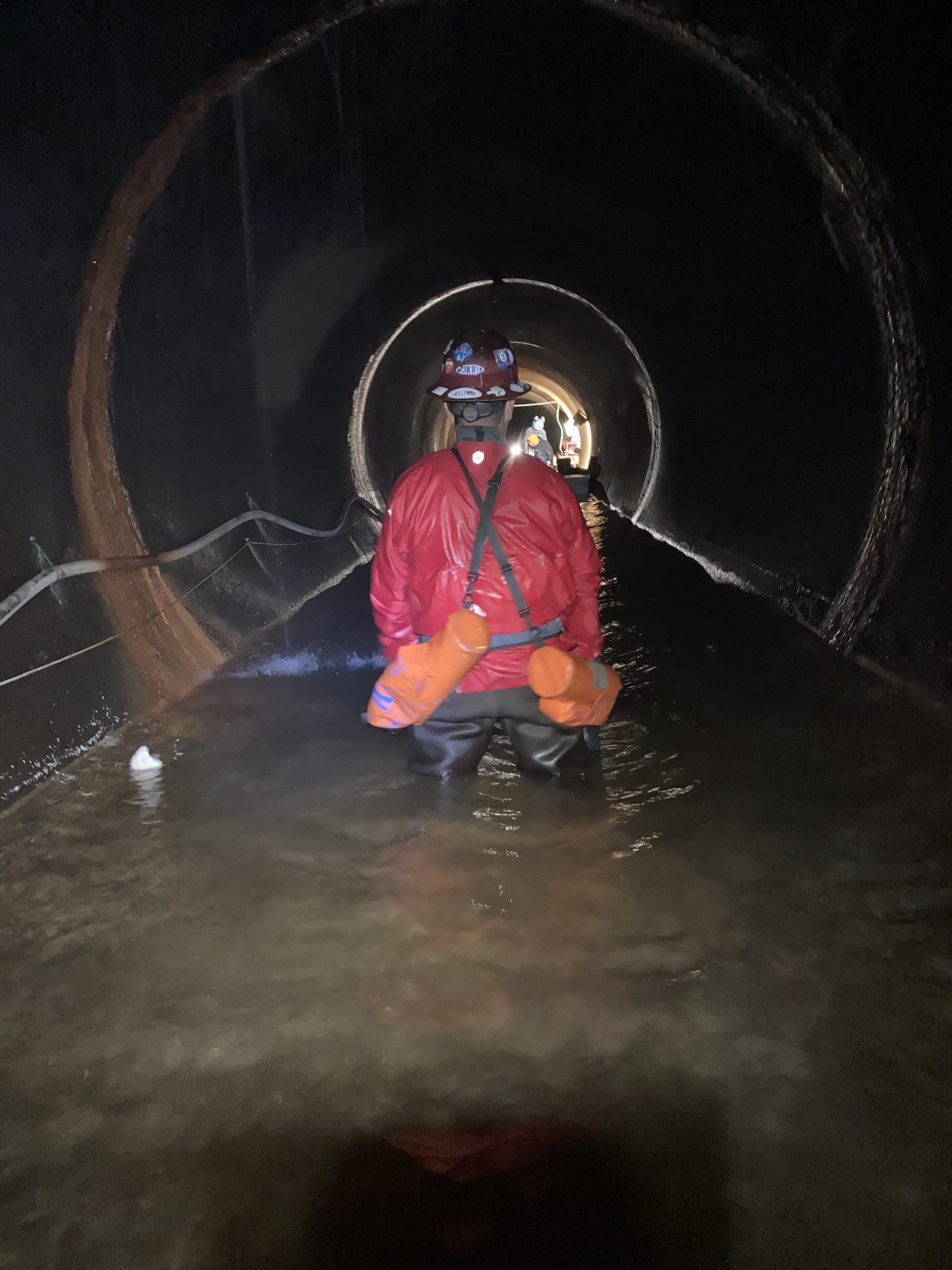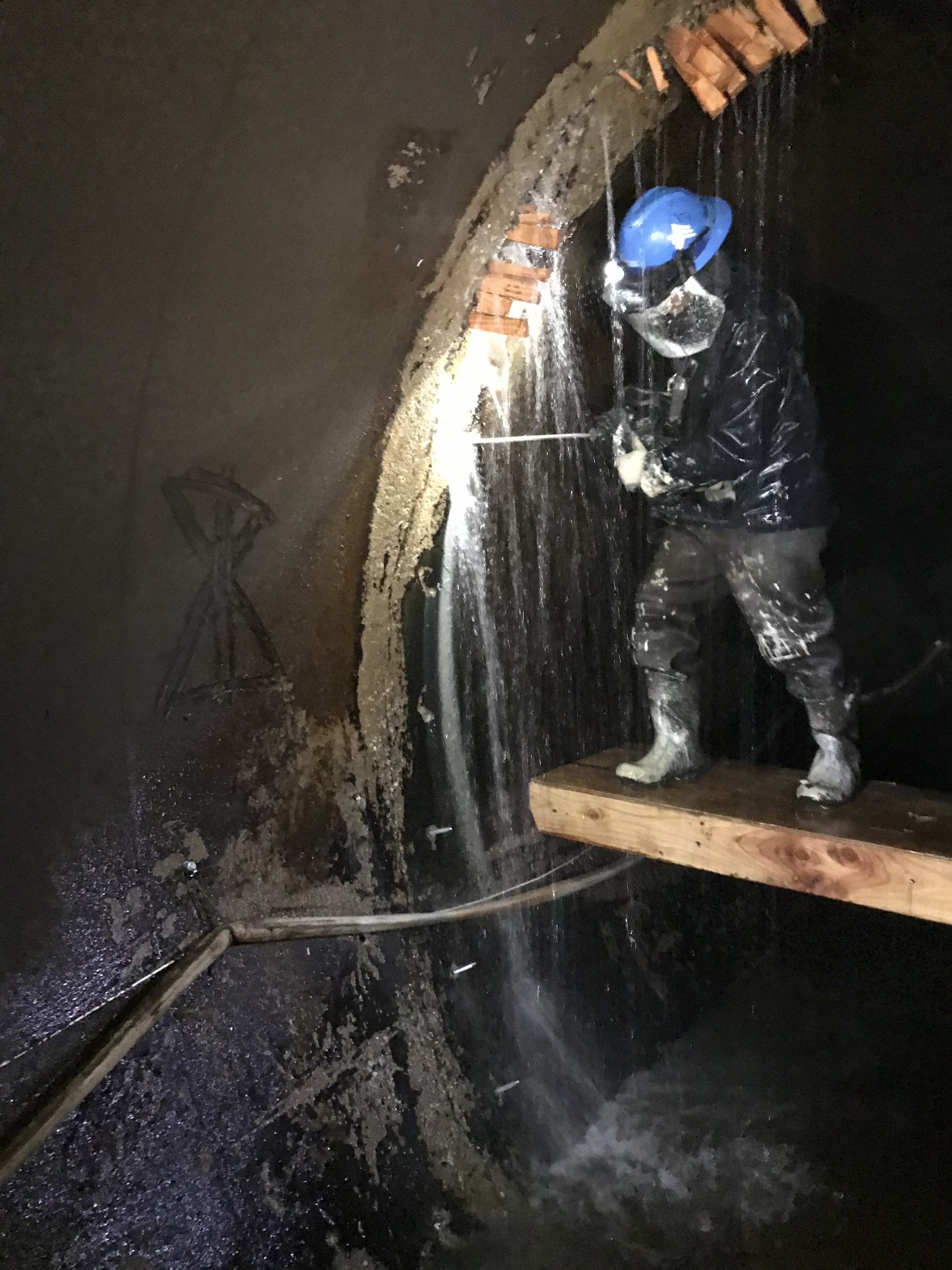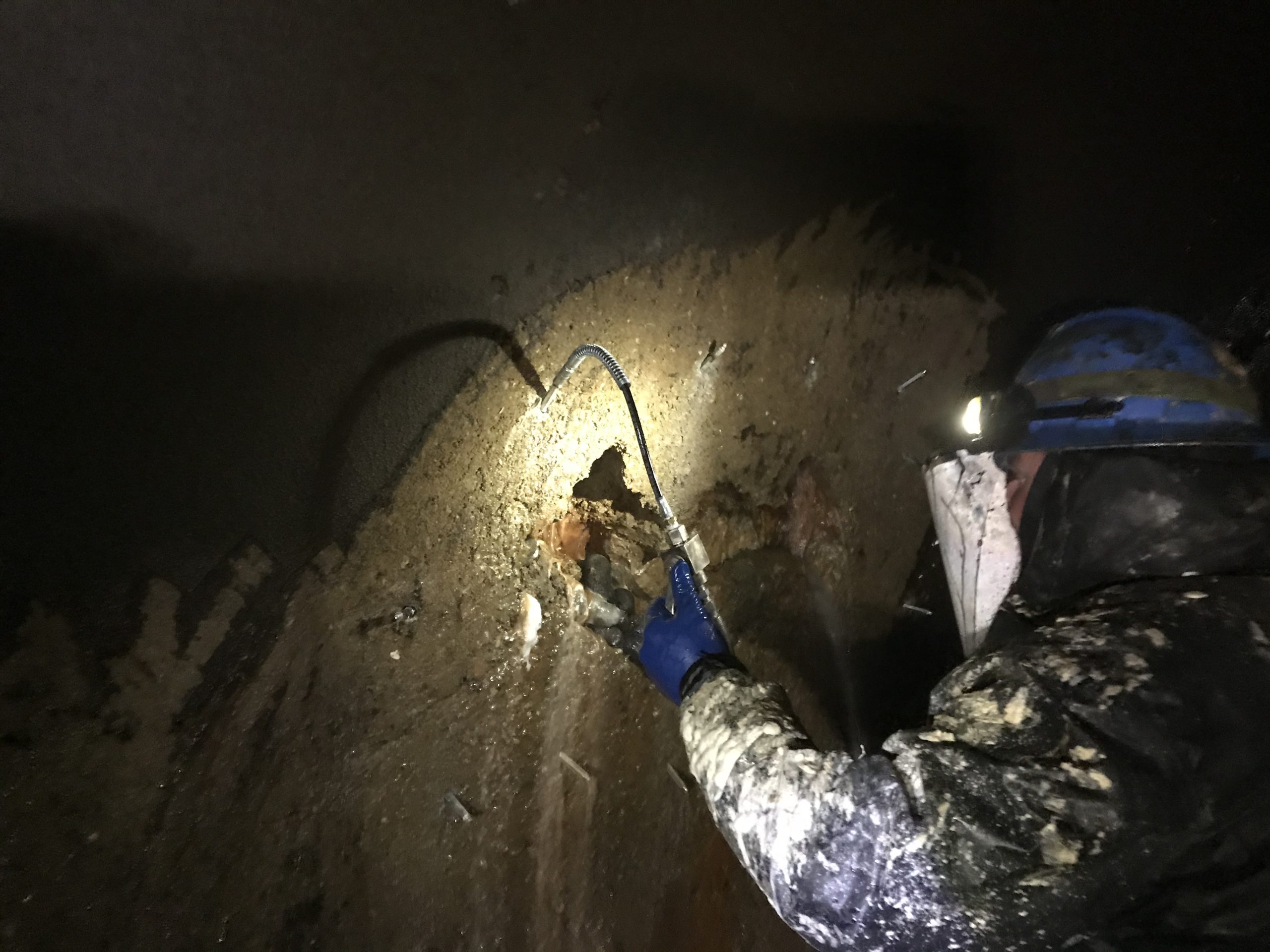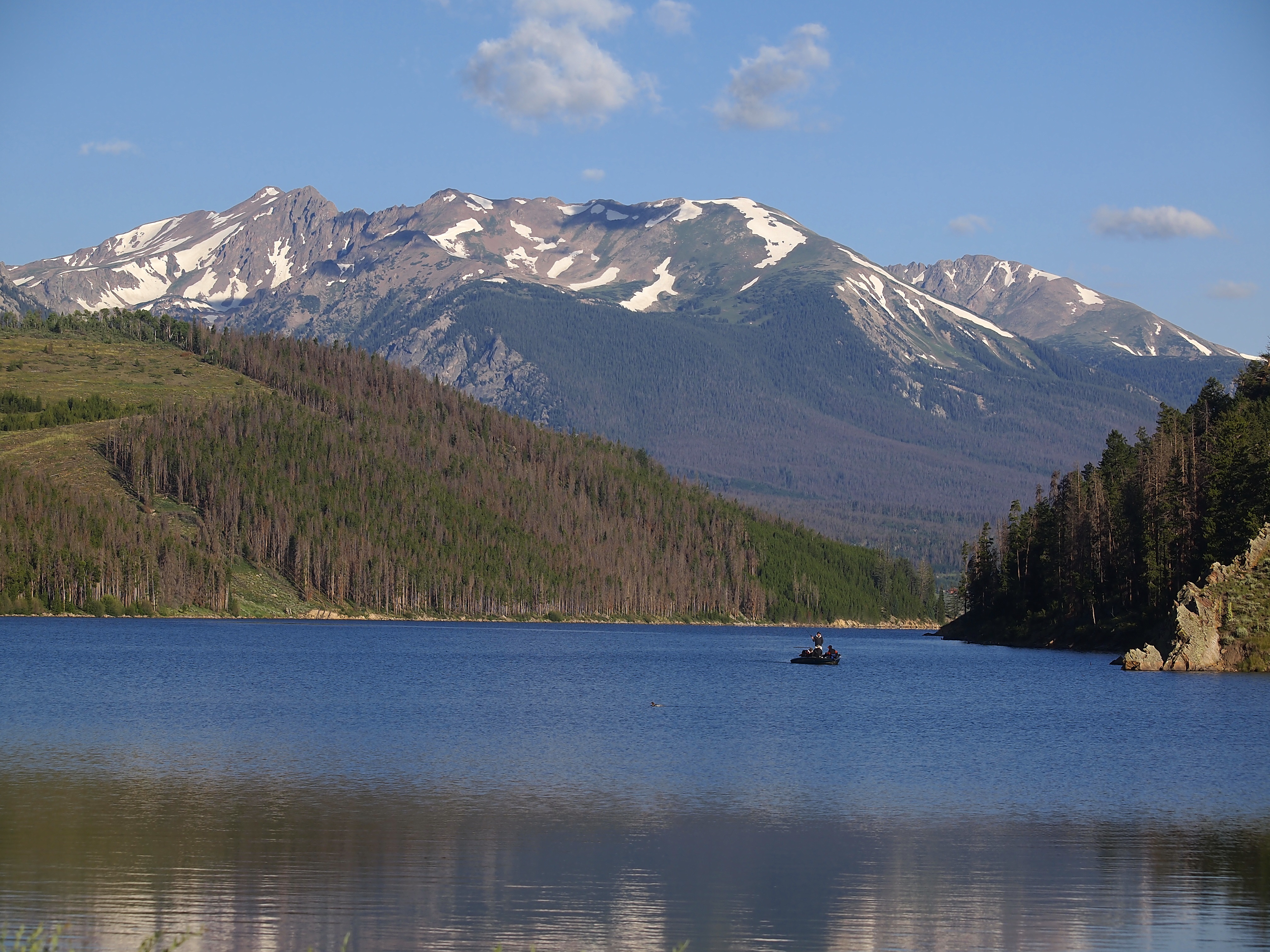
Dark, damp and claustrophobic confines
Some maintenance jobs are harder than others, and Denver Water just finished a doozy.
The task: patch some of the leaky spots in a 23-mile water tunnel that cuts under the Continental Divide, and do it in damp, dark and claustrophobic confines — and do it fast.
The repairs recently completed at the Roberts Tunnel were among the first needed inside the nearly 60-year-old conveyance that can move up to 480 million gallons of water per day from Dillon Reservoir on the West Slope into the South Platte River Basin on the Front Range.
The utility has inspected the tunnel — one of Denver Water’s most critical pieces of infrastructure — for decades and found few problems.
But time has taken its toll. Over the last several weeks, engineers set out to plug several small cracks and holes in the tunnel’s concrete lining that have most likely developed due to the hydraulic pressure of Dillon Reservoir pushing on its west side. Crews also patched up areas where the concrete was deteriorating.
One positive: the repairs at issue are within the first 2 miles of the tunnel’s west side, limiting the distance workers had to travel inside the tunnel’s confines. That’s where the pressure from the reservoir is likely having the greatest impact, by forcing water through small cracks and crevices in the tunnel’s concrete.
“The repairs are very challenging,” said Brad Piede, a Denver Water engineer overseeing the project.
The process started in August, when Denver Water closed the gate under Dillon Reservoir and shut off flow through the tunnel. That step, in and of itself, required Denver Water to take numerous additional steps to ensure consistent water flows from other facilities for customers.
Turning off that flow allows work inside the tunnel to begin. Even so, some water still flows along the bottom of the 10-foot-wide tunnel, so workers had to divert that water around work areas to allow them to perform repairs.
Most of the fixes involved injecting grout into the holes as well as behind the concrete liner.
But that’s not all.
“The grout has to set fast enough so water intruding into the area doesn’t wash it away,” Piede said.
The holes and cracks in the tunnel concrete don’t pose a major threat to the tunnel itself.
When water is flowing through the tunnel at full capacity, the pressure evens out and probably reduces the penetration of water into — and out of — the tunnel lining, Piede said.
But, he added, it’s important to reduce any deterioration that comes with time.
“You don’t want the tunnel to go into disrepair, and let these things fester, either,” he said. “This is preventative maintenance.”
Small holes and cracks, left unattended, could get worse over time and potentially create more serious problems.
On top of the technical challenges posed by the repairs, workers were racing the clock. Denver Water can’t keep the Roberts Tunnel turned off very long.
The project schedule was only six weeks. Keeping the tunnel off also affects hydropower production, flows in the North Fork of the South Platte River and operations across the system.
The work wrapped up Oct. 6. Piede said the project required a few changes “on the fly,” but that repairs “went well and on schedule. We’d call it successful.”
So, as you flip on your shower in the morning, you might want to give a quick thought, once again, to all the work and infrastructure built over decades that delivers that water to your bathroom. And maybe say a quiet thank you to the laborers who worked deep inside the earth in a wet, dark tube, ensuring the flow will continue long into the future.
Watch a video of some of the work with commentary from Gary Metz, senior project manger from Restruction Corporation:




